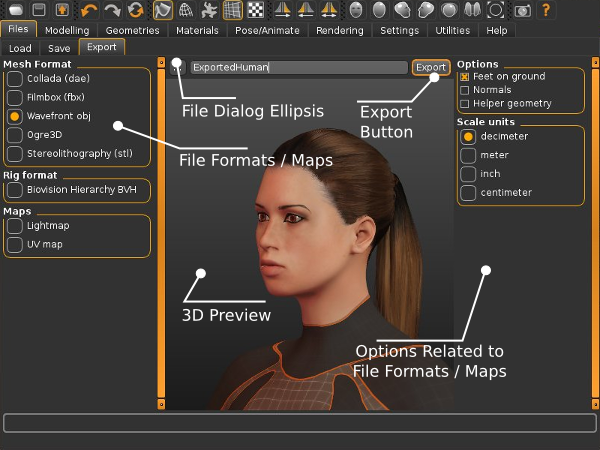Makehuman 2 0 Updates

Interpolation of MakeHuman characters: 1st, 3rd, 5th, 7th are targets, others intermediate shapes. Using this technology, with a large database of morphing targets, it's virtually possible to reproduce any character. It uses a very simple in order to access and easily handle hundreds of morphings. The MakeHuman approach is to use with common parameters, like height, weight, gender, ethnicity and muscularity. In order to make it available on all main, beginning from 1.0 alpha 8 it's developed in using and, with an architecture fully realized with plugins. The tool is specifically designed for the modeling of virtual humans, with a simple and complete pose system that includes the simulation of muscular movement. The interface is easy to use, with fast and intuitive access to the numerous parameters required in modeling the human form.
Obrazec grazhdansko pravovogo dogovora v uzbekistane. There are many myths associated with the activities of the Tokyo resident.
MakeHuman Community 1.2.0-alpha2 was released 2018-12-10. Th la menthe la caution instrumental mp3 download free. It is important to understand that 1.2.0 alpha 2 is an alpha release. This means that things will behave strangely. Before downloading the build, you should at least read the 'known issues' section in these notes.
The development of MakeHuman is derived from a detailed technical and artistic study of the morphological characteristics of the human body. The work deals with morphing, using linear interpolation of both translation and rotation.
With these two methods together with a simple calculation of a form factor and an algorithm of mesh relaxing, it is possible to achieve results such as the simulation of muscular movement that accompanies the rotation of the limbs. License [ ] MakeHuman is and, with the and database released under the GNU License. Models exported from an official version are released under an exception to this,, in order to be widely used in commercial and non-commercial projects. Awards [ ] In 2004, MakeHuman won the as best Python script.

Software history [ ] The ancestor of MakeHuman was MakeHead, a python script for Blender, written by Manuel Bastioni, artist and coder, in 1999. A year later, a team of developers had formed, and they released the first version of MakeHuman for Blender. The project evolved and, in 2003, it was officially recognized by the Blender Foundation and hosted on.
In 2004, the development stopped because it was difficult to write a Python script so big using only Blender API. In 2005, MH was moved outside Blender, hosted on SourceForge and rewritten from scratch in.
At this point, version counting restarted from zero. During successive years, the software gradually transitioned from C to. While performant, it was too complex to develop and maintain.